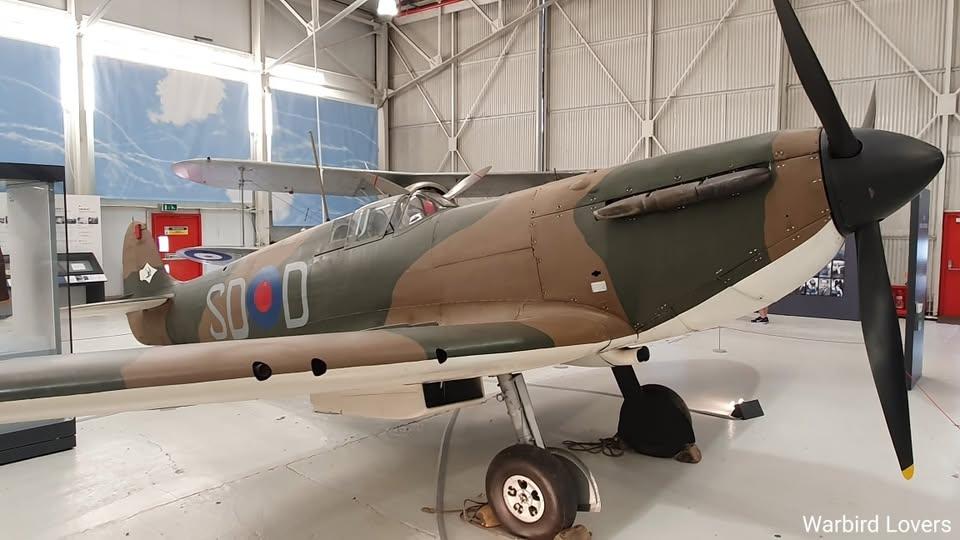-
Legacy Member

A bit of Canadian aviation history
-
The Following 7 Members Say Thank You to Bruce_in_Oz For This Useful Post:
-
12-15-2024 05:13 PM
# ADS
Friends and Sponsors

-
Contributing Member


Excellent video, thank you for sharing it with us. Not many grasp what an immense effort was made by Canada with the BCATP to supply pilots and aircrew to the war effort. The Canadian prairie provinces had most of the flying training schools with 15 in Alberta, 19 in Saskatchewan, 18 in Manitoba, and 26 in Ontario. The numbers of the aircraft employed will give you an idea of the scale of the BCATP:
with the BCATP to supply pilots and aircrew to the war effort. The Canadian prairie provinces had most of the flying training schools with 15 in Alberta, 19 in Saskatchewan, 18 in Manitoba, and 26 in Ontario. The numbers of the aircraft employed will give you an idea of the scale of the BCATP:
Avro Anson: 4,413
Harvard: 2,258
Cornell: 1,555
Tiger Moth: 1,546
Airspeed Oxford: 1,425
Cessna Crane: 826
Fairey Battle: 740
Bolingbroke: 626
Fleet Finch: 431
Not to mention a smattering of Lysanders, Puss Moth, Norsemen, Halifax, Supermarine Walrus (for rescuing downed students in the Great lakes), Yales, and a few others I've forgotten. The numbers of pilots graduated is staggering also. From a humble beginning of only 38 graduates in October 1940 the numbers grew to an amazing 3113 graduates on average per month by 1942. In October of 1943 an amazing 5,157 students graduated! By the end of the war over 167,000 students had graduated from the BCATP.
-
The Following 3 Members Say Thank You to Sapper740 For This Useful Post:
-
Moderator
(M1 Garand/M14/M1A Rifles)


Also interesting was the process to recruit students from the U.S. In Damn Lucky by Kevin Maurer, the process is described as it pertained to the subject of the book, John “Lucky” Luckadoo, before he instead joined the Army and eventually ended up flying B-17 bombers in the 100th Bomb Group of the 8th Air Force.
My uncle, Henry Archer Womack, went through this very training scheme in Canada after running across the border during the Battle of Britain
after running across the border during the Battle of Britain . The training scheme was more like four phases. That final phase was after my uncle was selected to fighter training, and was also carried out in Canada. He completed his training at the end of 1940 and was posted to RAF Hawarden, Flintshire, Wales, 57 OTU, for transition to the Supermarine Spitfire. Interestingly, while he was at Hawarden, Spitfire I No. K9942, now located at Cosford, was also there as a training aircraft. It was fairly caned out and had suffered cat. B damage in the Battle of Britain that prohibited it from going back into battle. It is now the oldest extant Spitfire in the world. Once he completed his transition the Spitfire he applied to be posted to the Eagle Squadrons, composed of American pilots. While waiting to be posted, he was killed in a low-altitude aerobatic training exercise in nearby Upton by Chester. I have my uncle's flight log and K9942 is not listed in it but it is comforting to know that K9942 was there on the flight line and Harry probably walk by it and lusted after it as he did his training.
. The training scheme was more like four phases. That final phase was after my uncle was selected to fighter training, and was also carried out in Canada. He completed his training at the end of 1940 and was posted to RAF Hawarden, Flintshire, Wales, 57 OTU, for transition to the Supermarine Spitfire. Interestingly, while he was at Hawarden, Spitfire I No. K9942, now located at Cosford, was also there as a training aircraft. It was fairly caned out and had suffered cat. B damage in the Battle of Britain that prohibited it from going back into battle. It is now the oldest extant Spitfire in the world. Once he completed his transition the Spitfire he applied to be posted to the Eagle Squadrons, composed of American pilots. While waiting to be posted, he was killed in a low-altitude aerobatic training exercise in nearby Upton by Chester. I have my uncle's flight log and K9942 is not listed in it but it is comforting to know that K9942 was there on the flight line and Harry probably walk by it and lusted after it as he did his training.

Bob
"It is said, 'Go not to the elves for counsel for they will say both no and yes.' "
Frodo Baggins to Gildor Inglorion, The Fellowship of the Ring
-
The Following 7 Members Say Thank You to Bob Womack For This Useful Post:














 PM
PM









